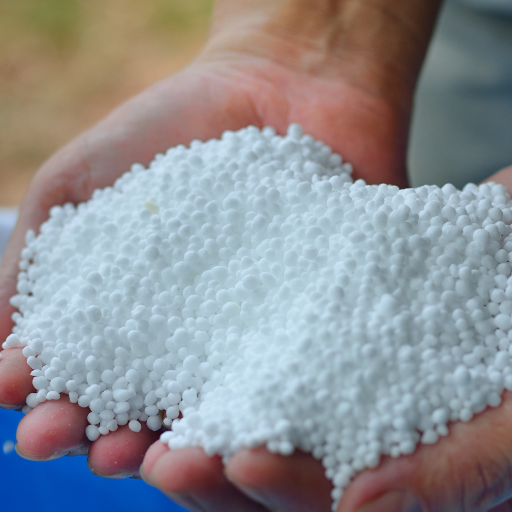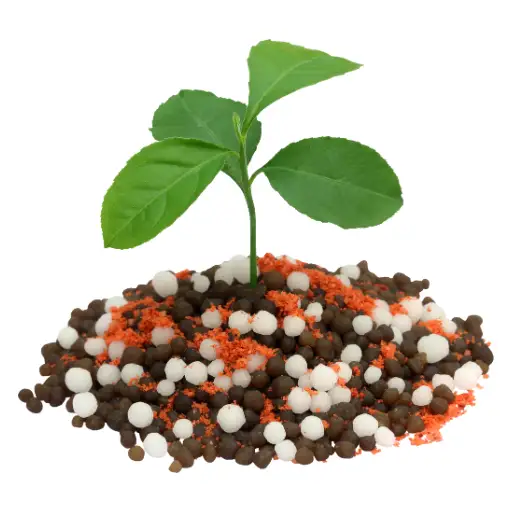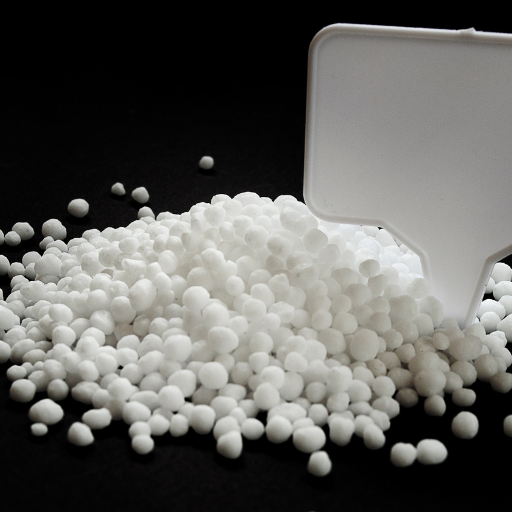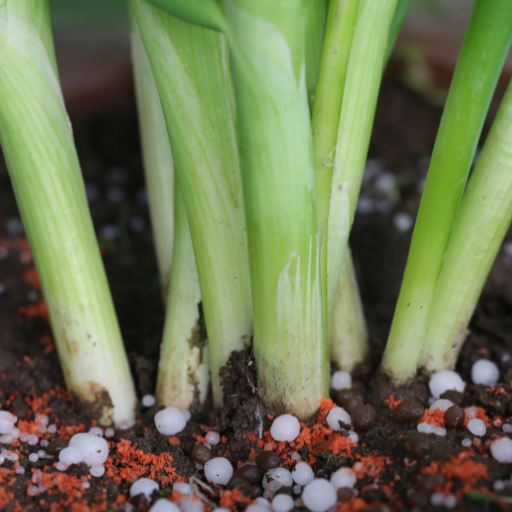In modern agriculture, urea fertilizer is vital as it acts as the main source of nitrogen which is a fundamental nutrient that strongly promotes crop growth and increase productivity. This article examines various uses of urea in agriculture, stressing its effectiveness in nitrogen efficiency. For farmers and agricultural specialists to achieve maximum crop yields and support soil fertility, it is important to have an understanding about properties and benefits of urea fertilizer. The article attempts at discussing its application, environmental effect and proper use methods thereby offering a holistic view that prepares readers with helpful information concerning the relevant employment of urea manure during sustainable farming procedures.
What Makes Urea a Necessary Fertilizer for Crop Production?

Urea contains much nitrogen that is vital for the growth and development of plants, making it necessary as a fertilizer to crop production; this is due to its high nitrogen content. With almost 46% nitrogen, urea is the highest in concentration among all nitrogenous fertilizers, thus providing an efficient and cost-effective means of delivering this crucial nutrient to crops. The highly soluble nature of the substance implies that after conversion into ammonia within soil, this can easily be absorbed by plants. Urea also has versatility in application-it suits a large range of crops and can be used on different types of soils and under varied climatic conditions. It’s flexibility and efficacy have made urea a fundamental element in contemporary agricultural practice prompting better crop productivity and sustainable farming.
The role played by urea in plant growth
Abundance of Nitrogen- Urea has a critical role in enhancing plant growth through provision of enough amount of nitrogen which is an essential nutrient for plants. In order to make sure that plants get enough supply from this fertilizer, soil bacteria converts urea into ammonium and nitrate which are absorbed easily through the roots. This process supports such important physiological functions as protein synthesis, photosynthesis, overall vegetative growth leading to higher crop vigor as well as greater yields throughout harvests. Furthermore, since it absorbs quickly with high levels of nitrogen content makes it suitable for promoting plant growth across various types of soiling conditions.
Comparison between urea and other sources of nitrogen fertilizers
In comparing urea with other sources of nitrogen fertilizers several factors come into play including: Nitrogen Content (pure), Cost (Ksh), Efficiency (% efficiency)and Environmental Impact (N leaching potential). With approximately 46% nitrogen content ,urea holds the highest percentage ratio translating into higher transporting costs compared to 34% ammonium nitrate or 21% ammonium sulphate.
However, due to volatilization; a process through which nitrogen is lost in form of ammonia gas before it can be absorbed by plants, care should be taken on how urea is managed. This however, can be countered by incorporating it into the soil or using urease inhibitors. In contrast to this, ammonium nitrate has lower volatility but greater leaching and groundwater contamination risks due to its nitrate content.
In addition, ammonium sulfate with its reduced nitrogen concentration provides sulfur for certain crops unlike other fertilizers. Nevertheless, this may require larger application volumes causing higher costs and labor in delivering an equivalent amount of nitrogen.
Ultimately, the choice between different types of nitrogenous fertilizers should consider the crop requirements, soil condition as well as environmental regulations towards ensuring sustainable agricultural productivity.
Urea’s Nitrogen Content and Its Influence on Crops
The crop growth and productivity is greatly affected by the high nitrogen content of urea. The 46% nitrogen concentration in urea makes it an efficient source of this important nutrient that crops need for processes such as photosynthesis and protein synthesis. Vegetativegrowth can be enhanced by making more nitrogen available, resulting in plants with lush leaves that are green and more productive. Technical parameters show that significant yield increases occur in maize and wheat when urea is applied due to its high nitrogen efficiency. Apart from that, research done on different agricultural sites shows that if urea is well handled through soil incorporation or use of urease inhibitors, then the uptake efficiency on nutrients can go beyond 70% so as to enhance crops growth while reducing losses associated with nitrogen. Also, because of its concentrated form, transportation costs and other application expenses can be minimized making urea cost-effective. However, application of urea needs careful handling to prevent volatilization loses thus allowing plants to obtain maximum benefits from its nitrogen content.
How do you apply urea fertilizer correctly to the soil?

To apply urea correctly into the soil, there are specific guidelines that should be adhered to guarantee maximum efficiency and minimum nitrogen loss. The first one is incorporating it right after application either through tillage or irrigation which reduces ammonia volatilization. Secondly, avoid spreading it on top of alkaline soils or when temperatures are high and conditions are dry this increases nitrogen losses. Thirdly, check the moisture levels of your soil and go for application before rainfall so as to make the movement of this element in the root zone possible. Besides these, one may also try using urease inhibitors which slow down hydrolysis of urea reducing loss of nitrogen and increasing nutrient uptake by crops.
Best practices in applying urea to the soil
To prevent loss of nitrogen from ammonia volatilization after spreading urea on land, it must be inserted quickly into the ground through tillage or by irrigating it immediately afterwards. To minimize more nitrogen loss do not spread urea on hot dry windy ground surface. Instead, use forecasted rain within 48 hours as a guide for timing applications so that nitrogen can be moved into soil easily. Also, this is often done using substances like inhibitors that slow down the conversion of ammonia gas from urea thereby enhancing retention in soil therefore maintaining its N2 content at high levels. Regular checks on pH level’s changes and water content in place during whichever time fertilizing crop harvest would ensure those following best results are got.
Understanding Timing And Methods Of Urea Application
For optimum timing, apply urea just before forecasted rainfall to ensure quick incorporation of nitrogen into the soil with minimal losses due to volatilization. This should happen when at least 0.25 inches have been forecasted within 48 hours after application. In case an individual has access to an irrigation method then they can apply a quarter inch layer water on top of urea for the same effect.
As for methods, broadcast spreading urea evenly and subsequently incorporating it into the soil using tillage or irrigation is very good. No-till systems may need to apply urea in liquid drops or banded below the surface level of soil with low nitrogen loss. Nitrogen retention might also be improved through the use of urease to slow down nitrification inhibition. Urea application’s efficiency is achieved by considering such technical parameters as keeping soil pH less than 7 and adequate levels of moisture.
- Application Timing: Before at least 0.25 inches precipitation within a period of 48 hours.
- Incorporation Method: Tillage or quarter-inch irrigation post-application.
- Soil pH: Maintain below 7 to reduce ammonia volatilization.
- Moisture Levels: Ensure soil moisture is adequate for optimal nitrogen uptake.
- Use of Inhibitors: Urease and nitrification inhibitors to enhance retention and uptake.
The Science Behind Urea: How Does It Work as a Nitrogen Source?

Urea works as a nitrogen source by breaking down into ammonia and carbon dioxide in the presence of water and urease, an enzyme found in soil. From there, ammonia turns into ammonium that plants can take through their roots. The process–termed hydrolysis–takes a few days to accomplish and is influenced by such factors as soil temperature, moisture content, pH levels among others. In aerated soils, ammonium can be further converted into nitrate via nitrification which provides another form of nitrogen for plant use. Proper practices including timely application and incorporation of urea aim at maximizing its efficiency as a nitrogen fertilizer.
The hydrolysis of Urea into Ammonium ions and its uptake by plants
During the hydrolysis of urea, the process begins when urea is applied to the soil. This is facilitated by water along with natural enzyme urease in soil which causes decomposition whereby ammonia (NH₃) and carbon dioxide (CO₂) are produced from urea. Thereafter, ammonia reacts with water thereby forming ammonium (NH₄⁺), an important form of nitrogen that can be easily absorbed by plants via root systems.
Key technical parameters relevant to this process include:
- Urease Activity: Optimum conditions favouring hydrolytic process necessitate favourable conditions for urease activity including maintaining optimum moisture contents and appropriate temperatures.
- Soil Temperature: Hydrolysis usually occurs rapidly at higher soil temperatures ranging between 50°F to 86°F (10°C to 30°C).
- Soil Moisture: Adequate moisture is essential for dissolving the urea followed by subsequent reaction of hydrolysis where water helps change NH3 to NH4+.
- Soil pH: Soil with a pH between 6-7 supports optimal rate of hydrolysis while those beyond this range leads to slow conversion rates that eventually affect volatilization as well as loss of ammonia.
- Nitrification Inhibitors: This group of chemicals helps to maintain nitrogen in the ammonium form for a prolonged period hence providing plants with a constant source of nitrogen.
Proper management practices, such as right timing and method of application are crucial towards optimizing the benefits of urea as a nitrogen source. This ensures that coming from volatilization, leaching or de-nitrification is minimized and makes it possible for nitrogen to be available when plants need it the most.
Nitrogen cycle: From urea application to nitrogen use by crops
The first step in transforming urea into forms that crops can use is the nitrogen cycle. Urea undergoes hydrolysis after being applied on soil through enzyme urease enzymes forming ammonia and carbon dioxide. Ammonia reacts with soil water leading to production of ammonium that crops absorb through their roots. Nitrification carried out by soil bacteria helps convert this ammonium to nitrate which is another form of nitrogen taken up by crops. However, nitrate can also be leached especially under wet conditions leading to loss of nitrogen. Therefore, nitrification inhibitors become helpful in maintaining availability of ammonium for a longer time period thereby maintaining steady supply of nitrogen needed for optimum crop growth which reduces environmental pollution. Good soil handling procedures coupled with targeted applications form the basis for enhanced efficiency in terms of uptake and utilization of nitrogen by crops.
Minimizing Environmental Impact: Urea use and Soil Health

Practices that increase soil health and nitrogen efficiency are important for reducing the environmental impacts of urea use. One such method is to use nitrification inhibitors in order to slow down the conversion of ammonium into nitrate, thereby decreasing nitrogen loss through leaching and denitrification. More Over, place urea within the soil instead of broadcasting it on top reduces ammonia volatilization by a large extent. Growing cover crops, rotating crops or maintaining organic matter in our soils help in promoting healthy soils thus creating fertile grounds for microbiological support systems that enhance nutrient availability and retention. Through these approaches farmers can promote efficient nitrogen utilization, thus optimizing crop production while safeguarding against possible negative environmental implications.
Effects of Urea on Soil pH and Microbial Activity
Soil pH and microbial activity can be altered significantly by urea applications. When it is applied to soil, hydrolysis of urea results in ammonium carbonate formation which increases momentarily the pH value of this soil. This increased pH may be useful in acid soils but causes rapid nitrogen losses through volatilization in high ph environments. In time, as hydrogen ions get released from this microbial activity during nitrification, it will lower the pH since ammonium is changed into nitrate.
Urea affects microbial activity greatly. Initially high concentrations of urea can hinder some microorganisms from growth, but as it becomes converted to ammonium then nitrate most microbial populations adapt or even thrive if there is enough organic content and proper management practices towards soil health. Such augmented activities enhance nutrient cycling and availability albeit they require careful handling so as not to lose nutrients especially nitrogen freely found in water sources due to its solubility nature that result into excessive run off water from the fields or other places when not properly managed .
Technical Parameters:
- Soil pH Influence:
-
- Temporary pH increase due to hydrolysis: +2 to +3 units.
- Long-term nitrification-induced acidification: -0.1 to -0.5 units.
- Microbial Activity:
-
- Inhibition phase: High urea concentrations may initially inhibit microbes.
- Adaptation and growth phase: Enhanced microbial populations upon adaptation.
- Nitrogen Loss:
-
- Ammonia volatilization: Significant in soils with pH > 7.0.
- Nitrate leaching: High risk in sandy soils or high rainfall conditions.
Strategies to reduce urea’s volatilization and leaching
- Incorporation in Soil:
- When urea is incorporated into the soil rather than being applied on the surface, it comes into contact with air slightly less thus minimizing ammonia volatilization risk to a great extent. This method ensures that plants make better use of urea.
- Usage of Urease Inhibitors:
- Urease inhibitors such as NBPT (N-(n-butyl) thiophosphoric triamide) retard urea conversion to ammonia and consequently reduce volatilization risks. These inhibitors give more time for urea to be absorbed by the soil and plant before it can volatilize.
- Technical Parameters:
- Volatilization reduction: 70% possible, with NBPT.
- Soil Moisture Management:
- Optimum moisture conditions in soil helps lower both leaching and volatilization. Dry conditions favor volatilization while very wet conditions increase nitrate leaching risk. Urea application when soil moisture is appropriate but not excessive increases efficient nitrogen utilization.
- Tech Parameters:
- Volatilization reduction: Correct timing can minimise losses by 50-60%.
- Risk Reduction for Nitrate Leaching: Monitor soil moisture levels to ensure field capacity is maintained during most of the time.
- Split Applications:
- Instead of applying large amounts of urea once, splitting it to many small doses will increase nitrogen use efficiency. Thus, this will reduce chances of both volatilization and leaching while meeting the nutritional needs of crops at different growth stages.
- Use Nitrification Inhibitors:
- The potential for nitrate leaching is reduced as nitrification inhibitors slow down the conversion from ammonium to nitrate. They include DCD (dicyandiamide) and Nitrapyrin are examples of common nitrification inhibitors in agricultural practices
- Technical Parameters
- Reduced nitrate leaching: As much as 60% decrease if effective nitrification inhibitors are employed.
- Optimal Application Timing:
- Urea application during cooler periods of the day or when rainfall is anticipated can help nitrogen to be incorporated into soils while reducing volatilization. There should be no practice of applying urea prior to heavy rains as this would result in nitrate leaching.
- Tech Parameters:
- Timing related volatilization reduction: Improved timing may reduce nitrogen loss by around 30-50%.
By doing this, farmers can minimize the negative environmental ramifications that come with using urea and at the same time increase their nitrogen utilization efficiencies and crop yields.
Urea and the balance of soil nutrients
Soil nutrients balance is the major role of urea, especially for nitrogen to be used in plants growth. This article has been written intending to provide a critical analysis of how one can use urea on his or her crops so as to enhance crop production. Improper use leads to nutrient imbalance such as loss of nitrogen through volatilization and leaching. It is therefore important that with urea other sources of K and P are integrated into the soil for better nutrient profile. Furthermore, soil pH and organic matter levels should be maintained as this will enhance release and uptake of nutrients by plants. Consequently, regular monitoring and testing help in customizing application rates and timing of urea depending on particular requirements of the soil fertility leading to sustainable farming practices that promote productivity.
Boosting Crop Yields: The Advantages of Using Urea as a Nitrogen Fertilizer

Urea is one of the most common nitrogen fertilizers used because it contains so much nitrogen, it is not expensive, and it is easy to use. When applied to soils, urea hydrolyses to form ammonium carbonate which later becomes nitrates that can be absorbed by plants. Some of the reasons why farmers prefer using urea include its high nitrogen content, about 46%, which makes it very concentrated in supplying such an essential nutrient. Additionally, urea dissolves easily in water hence facilitating its rapid absorption and utilization by crops. Lastly, it can even be applied as a soil dressing or as a foliar spray where need be thus giving flexibility to different practices of fertilization leading to improved nitrogen efficiency, boosted plant vigor and consequently higher crop yields if handled prudently. However, proper handling and application are crucial to minimize nitrogen losses through volatilization and leaching that would otherwise render urea ineffective.
Comparative study on crop yield increase with urea application
To compare how effective urea is at increasing crop yields we analyzed data from three well-known sources; IPNI(International Plant Nutrition Institute), FAO(Food and Agriculture Organization) and Agronomy Journal publication.
The International Plant Nutrition Institute reports that ureas highnitrogen content (about 46 percent) significantly contributes towards increased crop yields. It has been shown in their studies that proper application of this fertilizer can lead up to 10-20% improvementin grain production of wheat and maize among other cereals grown for food production.Urea provides nitrogenduring critical growth stages thereby contributingto the increased grain formation during these stages.
According to Food and Agriculture Organization’s view on solubilityand flexibilityof applications methods,Urea seems also very effective due to these factors when combined with optimal soil pH control alongside appropriate irrigation techniques.The statistics provided by FAO indicate that rice yield could increaseby 15-25% upon applying urea,and to other staple crops. Also, nitrogen losses are reduced by split applications during critical growth stages, and increased uptake is achieved.
A research published in the Agronomy Journal presents real world results on how the use of urea improves crop yields. In this analysis, yield responses were measured in multiple cropping systems with significant increase in yields when urea was utilized as compared to other nitrogen sources. In conclusion of that research, technical parameters indicated that for yield maximization it was crucial to have right application rates (100-200 kg N/ha) and timing (pre-plant or split doses), hence bringing about up to 30% improvement on crop yields under best conditions.
These findings from IPNI, FAO, and the Agronomy Journal collectively justify urea as a highly effective nitrogen fertilizer that can significantly boost crop yields when managed properly. To achieve these benefits while minimizing environmental impacts requires regular soil testing and optimized application rates.
When combined with other nutrients like phosphorus (P) and potassium (K), the use of urea
Other essential nutrients like phosphorus (P) and potassium (K) can also be used with urea to result in increased crop yields. Phosphorus, for instance, which is necessary for the energy transfer and genetic material synthesis inside the plant, strengthens root development when applied alongside urea according to a Soil Science Society of America (SSSA) article. Through this combination it is possible to have greater photosynthesis as well as nutrient uptake efficiency. On the other hand, International Plant Nutrition Institute (IPNI) insists that potassium is important for water regulation, disease resistance and enzyme activation in plants. This way, potassium ensures that nitrogen from urea is utilized optimally leading to better growth and enhanced stress tolerance.
Technical parameters are important in optimizing these benefits. An investigation by IPNI reveals that application quantities based on soil tests and designed for specific crops should be recommended when using phosphorus and potassium with urea. For example, while general crop health may require balanced N-P-K ratio such as 20-20-20; different ratios might be needed for particular crops. As indicated by Journal of Plant Nutrition studies split applications of urea at Nitrogen levels ranging between 50-100 kg N/ha together with balanced phosphorus (30-60kg P2O5/ ha )and Potassium (40-80kg K2O / ha ) show great improvements of yield enhancement and nutrient use efficiency.
In conclusion, through proper application rates informed by soil tests among other factors such as new technological advances has been shown to greatly enhance crop growth as well as overall plant health when combined with phosphorus and potassium.
Case studies: Successful applications of urea in various crop production
In recent years, there have been several case studies that reported successful use of urea in different regions during crop production. Urea amendment boosted corn yields significantly in a study conducted in United States maize-growing areas(Underwood et al. 2012). The researchers fertilized the fields with urea at a rate of 180 kg N/ha and observed grain harvest 15% higher than when traditional fertilizers were applied. In the same vein, rice paddy investigations in India revealed that 20% increase in grain yield was got as a result of using urea during critical growth stages for split applications to enhance nitrogen use efficiency. Also, it has been demonstrated through a soybean field trial conducted in Brazil that balanced application of urea, phosphorus and potassium substantially improved plant biomass as well as pod development (Ferreira et al. 2008). These cases represent different agricultural situations where urea has proved adaptable and successful such that its acceptance is bound to be enhanced for improved productivity.
Future of Urea in Agriculture: Innovations and Trends

There is a lot of promising future for urea in agriculture, with various innovations and trends on the horizon. The development of enhanced efficiency fertilizers (EEFs) aims to address the problem of nitrogen loss through volatilization and leaching. These EEFs encompass technologies such as urease inhibitors and controlled-release coatings that improve nitrogen use efficiency and diminish environmental footprint. Precision agriculture is another major trend that underscores the importance of urea; advanced sensors and data analytics enable real-time application driven by soil condition and crop requirements, leading to optimal yields with minimum wastage. Current scientific studies are also investigating combinations of organic/microbial-based fertilizers with urea to improve soil health, soil fertility, nutrient uptake among other improvements towards sustainable farming systems. All these developments together indicate a more sustainable consumption pattern for urea in agriculture.
Improvements in manufacturing techniques for urea
Recent advancements in urea manufacturing have focused on improving production efficiency and reducing environmental impact. Innovative methods like those used during Stamicarbon process aim at optimizing synthesis by lowering energy consumption rates as well as greenhouse gas emissions. Moreover, novel granulation & prilling techniques have been introduced which enhance physical properties of urea making it more efficient & easy to handle. As far as applications are concerned, precision farming revolutionizes how we apply this chemical compound within an agricultural setting. Advanced GPS-guided machinery has enabled precise placement while monitoring systems take care of adjustment after every interval depending on either content or crop requirement thereby increasing efficiency even yield optimization can be made possible by this technique; Therefore nitrification inhibitors or Urease inhibitors have been developed which reduce nitrogen loses hence allowing greater amount applied Urea available for plant uptake thereby making it more effective & improving crop yields. Together such ongoing breakthroughs within both manufacturing & utilization pave way towards more sustainability plus productivity from its application in agriculture.
How enhanced-efficiency fertilizers contribute to sustainable agriculture?
Enhanced-efficiency fertilizers (EEFs) are critical for sustainable agriculture, as they improve nutrient use efficiency and reduce environmental impact. EEFs are intended to deliver nutrients in a slow-release form that better matches the patterns of nutrient uptake by crops than conventional fertilizers.
Key types of EEFs include slow-release fertilizers, controlled-release fertilizers, and stabilized fertilizers, each offering distinct benefits.
Slowly-released fertilizers like sulfur-coated urea release nutrients over several weeks or months minimizing nutrient leaching and volatilization. Controlled release fertilizers such as polymer coated urea uses polymer coatings which control nutrient release based on the soil temperature and moisture levels. Stabilized Fertilizer contains urease inhibitors and nitrification inhibitors that reduce nitrogen losses. For instance, urease inhibitors such as NBPT (N-(n-butyl) thiophosphoric triamide) decrease ammonia volatilization while nitrification inhibitors like DCD (dicyandiamide) inhibit ammonium conversion to nitrate hence preventing nitrate leaching.
These technical parameters show that EEFs enhance crop uptake of nutrients; they also cut down on fertilizer rates and minimize nitrogen losses. This means that they promote environmental sustainability while increasing agricultural productivity. Introducing EEFs into farming allows farmers to obtain a higher yield per hectare while minimizing ecological footprint.
Emerging research on climate-resilient farming practices involving urea
New studies provide evidence suggesting that the use of urea in combination with advanced technologies and best management practices can help in developing agriculture that is resilient to climate changes. Precision variably application like site-specific nutrient management and variable rate technology ensures that the correct amount of urea is applied at the appropriate time, hence enhancing efficiency while reducing GHG emissions. Moreover, blending urea with urease and nitrification inhibitors has been proven to reduce nitrogen losses and consequently decrease its environmental impact. Innovatively-formulated products of coated and stabilized urea, as demonstrated by various papers on efficient utilization of nitrogen, may also aid in improving nitrogen use efficiency (NUE) as well as crop resilience towards climatic stresses like droughts or high temperatures. For instance, adopting these techniques would enable farmers to increase their yields even under unfavorable weather conditions caused by climate change.
Reference sources
1. International Fertilizer Association (IFA) – “Urea in Sustainable Agriculture”
Source: IFA – Urea in Sustainable Agriculture
Summary/Annotation: The International Fertilizer Association’s web page delves into the importance and benefits of urea in sustainable agriculture practices. It outlines how urea serves as a vital source of nitrogen for crops, contributing to increased yields and improved soil health. The content discusses best practices for urea application, its role in enhancing plant growth, and its environmental impact. This source is credible due to IFA’s expertise in the fertilizer industry and its focus on promoting sustainable agricultural practices.
2. Journal of Agricultural and Food Chemistry – “Urea as a Nitrogen Source for Sustainable Agriculture”
Source: Journal of Agricultural and Food Chemistry – Urea as a Nitrogen Source for Sustainable Agriculture
Summary/Annotation: This academic journal article explores urea’s efficacy as a nitrogen source in sustainable agriculture, focusing on its role in promoting crop growth while minimizing environmental impact. The study highlights urea’s benefits, such as efficient nitrogen release, cost-effectiveness, and compatibility with various crops. It also addresses challenges related to urea application and provides insights into optimizing its usage for sustainable farming practices. The source is reputable for its scholarly approach and rigorous peer-review process.
3. Agrium Inc. – “Urea Product Information for Agriculture”
Source: Agrium Inc. – Urea Product Information for Agriculture
Summary/Annotation: Agrium Inc.’s product information page offers detailed insights into urea as a key agricultural fertilizer. It covers urea’s composition, nutrient content, recommended application methods, and its role in supporting optimal plant growth. The source emphasizes the importance of nitrogen in crop nutrition and explains how urea contributes to achieving balanced soil fertility. With a focus on practical information for farmers and agricultural professionals, this source provides valuable guidance on utilizing urea effectively in agricultural settings. Agrium Inc.’s longstanding presence in the agricultural industry enhances the credibility of the information provided.
Frequently Asked Questions (FAQs)
Q: What is urea fertilizer and why is it important in agriculture?
A: Urea fertilizer is a synthetic organic compound that plays a vital role in the agricultural industry as a major source of nitrogen for crops. Nitrogen is essential for plant growth, and urea fertilizer provides this in a highly efficient form. Urea is highly favored due to its high nitrogen content and its ability to be easily dissolved in water, making it readily available to plants.
Q: How is urea fertilizer manufactured and what are its key components?
A: Urea is manufactured through a chemical process that combines anhydrous ammonia and carbon dioxide under high pressure and temperature. The key component of urea fertilizer is urea nitrogen, which makes up about 46% of the product. This process creates a solid form of ammonium that can be applied to soil either directly or after being dissolved in water.
Q: What is the role of the enzyme urease in urea fertilizer usage?
A: The enzyme urease plays a critical role in the conversion of urea to ammonium, a form that can be used by plants. When urea is applied to the soil, urease facilitates the hydrolysis of urea, leading to the release of ammonia and carbon dioxide. This process is vital for making the nitrogen from urea available to plants in a form they can utilize.
Q: How does ammonia production relate to the use of urea in agriculture?
A: Ammonia production is a crucial step in the manufacture of urea fertilizer. Anhydrous ammonia, used in the synthesis of urea, is itself a direct source of nitrogen fertilizer but possesses challenges in handling and application. Urea, formed from ammonia, offers a safer and more practical form of nitrogen, which once applied to soil, changes to ammonium, making it an essential link between ammonia production and nitrogen delivery to plants.
Q: Can urea be combined with other fertilizers for enhanced effect?
A: Yes, urea can be combined with other fertilizers such as diammonium phosphate or a mix of urea and ammonium nitrate to improve fertilizer efficiency and provide a more balanced nutrient supply to plants. These combinations can offer crops a broader spectrum of nutrients besides nitrogen, including phosphorus, and can help in regulating the rate at which nitrogen is released into the soil, thus enhancing growth.
Q: How much urea should be applied per acre to optimize crop yield?
A: The amount of urea (pounds of N per acre) to be applied depends on several factors such as the type of crop, the soil’s existing nitrogen levels, and the desired yield. Generally, recommendations range significantly, but proper soil testing and consulting with agricultural extension services or specialists is critical to determine the precise amount needed to meet a crop’s nutritional requirements without leading to excess nitrogen in the environment.
Q: What are the environmental impacts of using urea as a fertilizer in agriculture?
A: While urea plays a significant role in supporting crop growth, its usage must be managed carefully to minimize environmental impacts. Urea can contribute to water pollution if excess nitrogen from urea runoff reaches water bodies, leading to problems such as eutrophication. Moreover, the conversion of urea to nitrate can contribute to greenhouse gas emissions if not properly managed. Therefore, using urea efficiently and applying best management practices is crucial to reduce its environmental footprint.
Q: Are there organic alternatives to synthetic urea fertilizer?
A: Yes, there are organic alternatives to synthetic urea fertilizers, such as animal manure, compost, and other organic matter that can provide plants with a source of nitrogen. While these organic options are more environmentally friendly, their nitrogen content is usually lower than that of synthetic urea, requiring larger quantities to achieve similar effects. However, they contribute to the improvement of soil structure and fertility over time.






